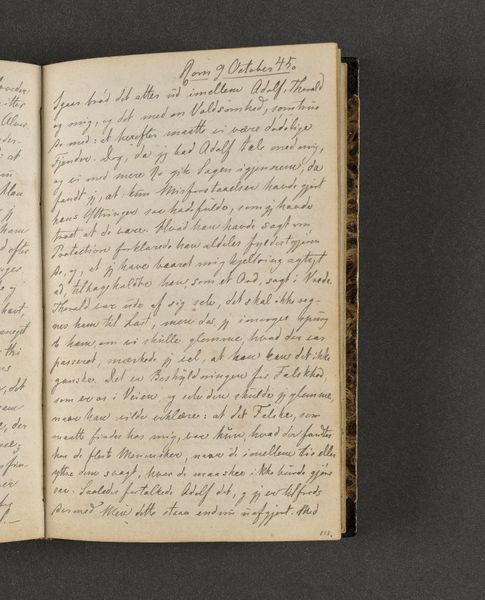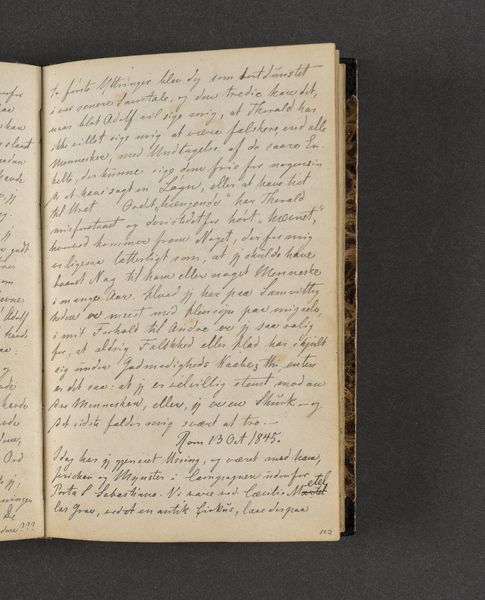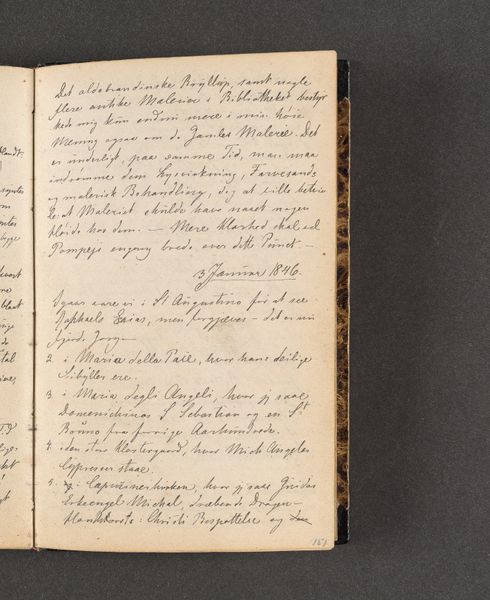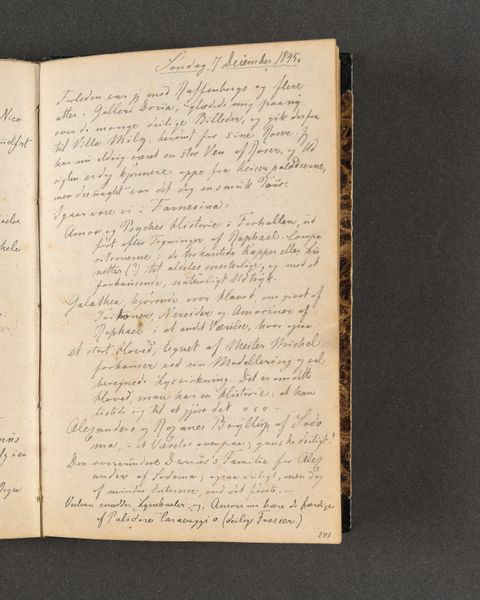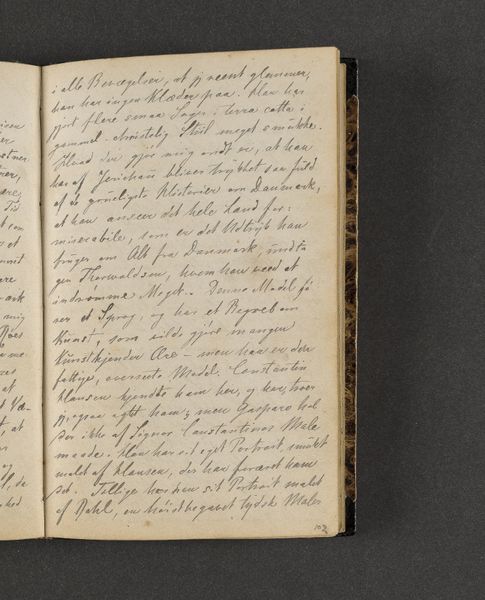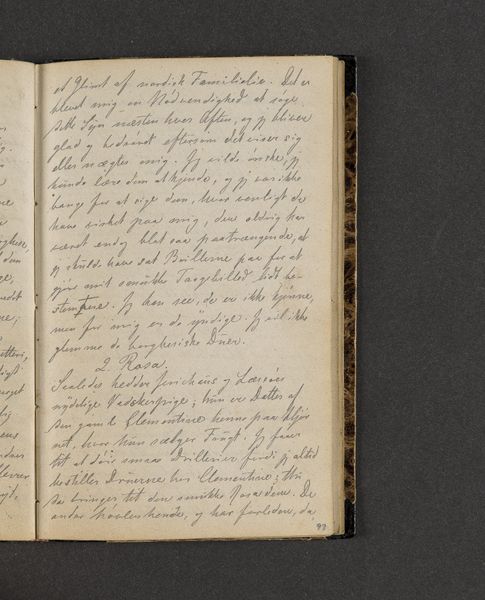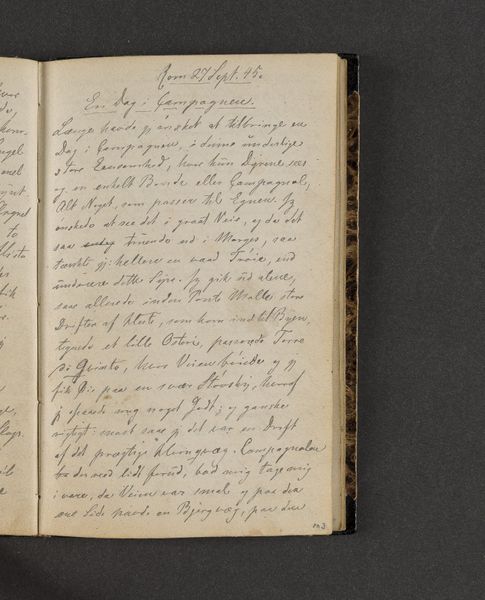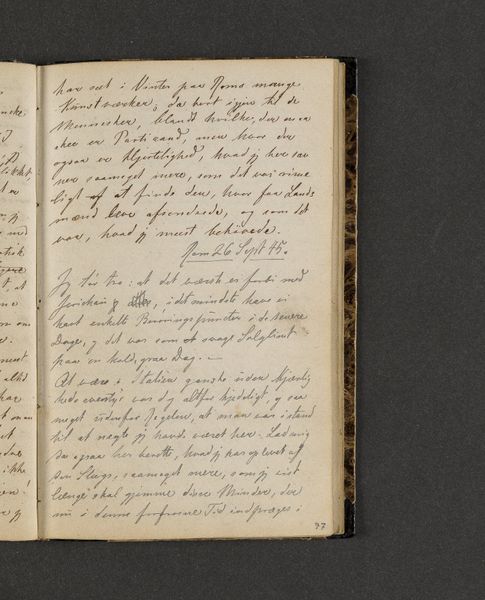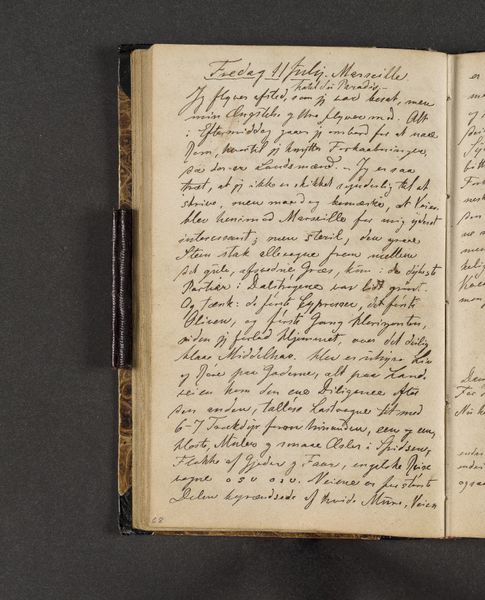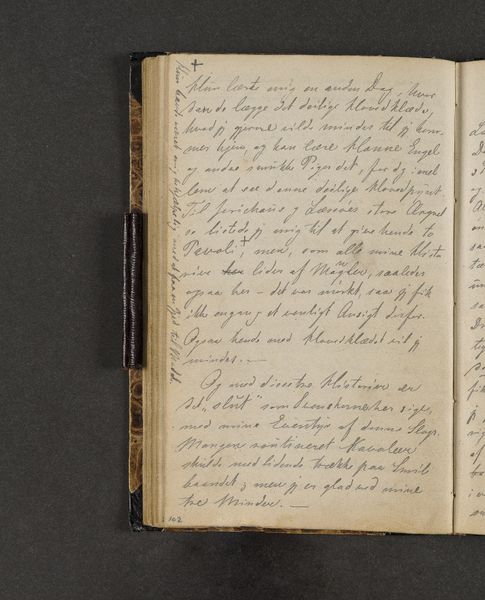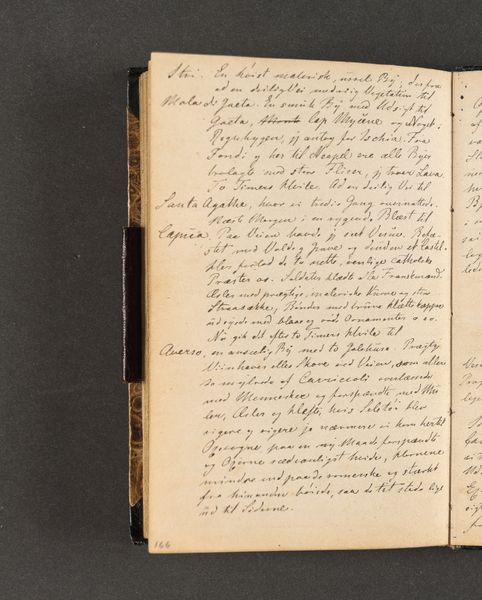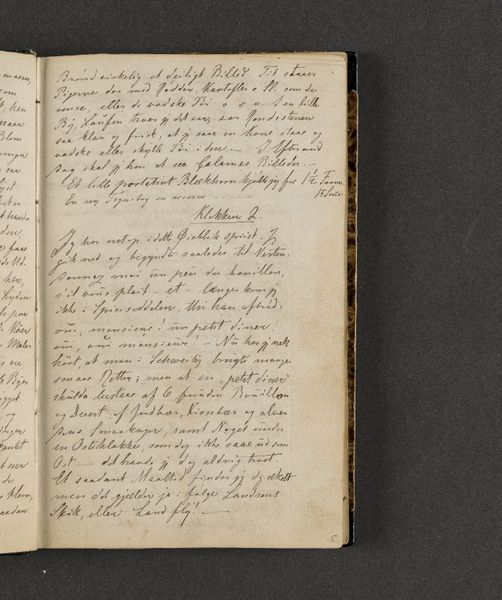
drawing, paper, ink
#
drawing
#
narrative-art
#
landscape
#
paper
#
ink
#
romanticism
Dimensions: 161 mm (height) x 103 mm (width) x 11 mm (depth) (monteringsmaal)
Curator: Today we're looking at "Rejsedagbog," a travel journal page from 1845 by Johan Thomas Lundbye, part of the collection at the SMK, Statens Museum for Kunst. It’s an ink drawing on paper. Editor: You know, before knowing anything else, I’m struck by how incredibly delicate this piece is. The handwriting feels almost like a spider’s web, so intricate and personal. It pulls me in immediately. Curator: Absolutely. Lundbye meticulously documented his travels, and here we see evidence of that firsthand. It shows a narrative with beautiful landscape elements – not just the scenery itself, but also reflections on his experiences. You can really examine his use of light and shadow crafted through the use of ink. Editor: It definitely feels Romantic. There's a sense of wonder and intimacy conveyed. I can almost feel him writing, the scratch of the quill on the paper, the flickering candlelight...it sparks a certain mood that's truly atmospheric. But reading this as material, do you think the content creates any limitations for a 21st century audience to grasp it? Curator: That’s a very astute observation. While Lundbye’s personal reflections undoubtedly add depth, it also underscores the art world's long history of focusing on specific demographics that typically centered on European white men as leading figures. However, it provides insights into how class and social position shapes what stories get told in history through art. It helps show the structure for interpreting beauty and knowledge. Editor: It is powerful to analyze it that way! I also believe these diary pages, despite the possible elitism in some ways, create such a unique experience to almost read an intimate story. It captures fleeting moments and emotions. A snapshot of a particular time and place filtered through Lundbye's sensibilities, and for that, this page gives access to history. Curator: Yes, by studying the materiality, we learn not just about art, but the entire production and societal systems from that time period. That is just such a compelling aspect. Editor: Indeed, it’s a tiny window into the soul and society. A reminder that even personal documentation can carry profound cultural significance, wouldn't you agree?
Comments
No comments
Be the first to comment and join the conversation on the ultimate creative platform.
